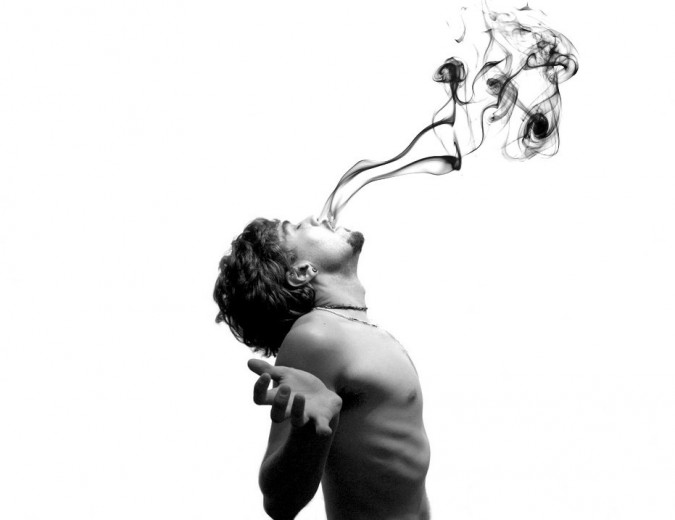Breathwork

Breathwork refers to any type of breathing exercises or techniques. People often perform them to improve mental, physical, and spiritual well-being. During breathwork you intentionally change your breathing pattern.
There are many forms of breathwork therapy that involve breathing in a conscious and systematic way. Many people find breathwork promotes deep relaxation or leaves them feeling energized.
Breathwork is used to help to improve a wide range of issues including: anger issues, anxiety, chronic pain, depression, emotional effects of illness, grief, trauma and post-traumatic stress disorder (PTSD)
Breathwork should be guided by a trained practitioner to facilitate the desired responses in a safe & effective manner. Check out MindBodyGreen for 3 beginner breaths. Below are some of the styles taught and implemented with Boundless Breath practitioners. If you have any questions, please feel free to consult with us.
Styles of Breathwork
Alternate nostril breathing
The energy of the nervous system is directly proportional to one’s breathing. Ancient yogic texts explain that the nostril on the right is our sun nostril and it controls our energy level; our left nostril is our lunar nostril and it controls our emotions.
Consequently, if we are tired, breathing long and deep through the right nostril will give us added energy. Breathing through the left nostril will bring us calmness even in the midst of emotions (anger, nervousness, joy, sadness).
When we breathe long and deeply through alternate nostrils, the whole nervous system is soothed, calmed and energized simultaneously. All that is required of a person is to do this alternate nostril breathing for 3–5 minutes and one’s whole nervous system will be revitalized.


Diaphragmatic breathing
The diaphragm is a large muscle that sits at the base of the lungs. When a person inhales, their diaphragm contracts and moves downward, creating space for the lungs to expand and fill with air. When a person exhales, the diaphragm relaxes and moves upward, helping move air out of the lungs.
Diaphragmatic breathing, or “belly breathing,” involves fully engaging the stomach, abdominal muscles, and diaphragm when breathing. This means actively pulling the diaphragm down with each inward breath. In this way, diaphragmatic breathing helps the lungs fill more efficiently.
During diaphragmatic breathing, a person consciously engages their diaphragm in order to take deeper breaths. A person will notice their stomach rising and falling. They will also feel an expanding or stretching sensation in the stomach, rather than solely in their chest and shoulders.
This may provide a number of health benefits, including:
- strengthening the diaphragm
- improving stability in the core muscles
- slowing the breathing rate
- lowering heart rate and blood pressure
- reducing oxygen demand
- promoting relaxation
Pursed lip breathing
To practice pursed lip breathing, breathe in slowly through your nose for two counts, keeping your mouth closed. Pucker or “purse” your lips as if you were going to whistle and breathe out.
Pursed lip breathing is one of the simplest ways to control shortness of breath. It provides a quick and easy way to slow your pace of breathing, making each breath more effective.
This breath technique may provide a number of benefits including:
- Improving ventilation
- Releasing trapped air in the lungs
- Keeping the airways open longer and decreases the work of breathing
- Slowing the breathing rate
- Improving breathing patterns by moving old air out of the lungs and allowing for new air to enter the lungs
- Relieving shortness of breath
- Fostering general relaxation


Sudarshan Kriya
Sudarshan kriya yoga (SKY) is a type of cyclical controlled breathing practice with roots in traditional yoga that provides relief for depression, and it is taught by the nonprofit Art of Living Foundation. It has four distinct components.
Detailed descriptions of the four main SKY breathing techniques are as follows.
Ujjayi or “Victorious Breath”: This involves experiencing the conscious sensation of the breath touching the throat. This slow breath technique (2–4 breaths per minute) increases airway resistance during inspiration and expiration and controls airflow so that each phase of the breath cycle can be prolonged to an exact count. The subjective experience is physical and mental calmness with alertness.
During Bhastrika or “Bellows Breath,” air is rapidly inhaled and forcefully exhaled at a rate of 30 breaths per minute. It causes excitation followed by calmness.
“Om” is chanted three times with very prolonged expiration.
Sudarshan Kriya which is a Sanskrit term meaning “proper vision by purifying action” is an advanced form of rhythmic, cyclical breathing with slow, medium, and fast cycles.
Sudarshan Kryiya should be guided and taught by a trained practitioner.
Breath of Fire
The breathing technique known as Breath of Fire involves passive, normal inhalations and powerful, rapid exhalations.
Also, the inhale and exhale should be the same length, without any pauses in between. This is different from slow breathing exercises, which often involve longer exhales.
With this technique, the pattern of your breathing is more important than the speed. So, start slow if you’re new to the technique. You can speed it up later on.
Breath of Fire is done in a seated position. It can last anywhere from 30 seconds to 10 minutes, depending on your experience level and preference.
This style of forced exhalation may help reduce stress, boost brain function, and improve respiratory health. It’s also said to strengthen the abdominal muscles and improve digestion.


Lion’s Breath
Lion’s breath is a type of pranayama that’s said to alleviate stress, eliminate toxins, and stimulate your throat and upper chest. In yoga, it’s also known as Lion Pose.
This breathing practice is related to the thyroid and the fifth chakra or energy center. Your fifth chakra is the seat of creativity, communication, and expression.
You can do lion’s breath to help clear your throat if you have a dry mouth or throat tickle. It also promotes relaxation in your facial and neck muscles. This is useful when you’ve used those muscles for speaking or while concentrating. And, of course, it engages your lungs with particular focus.
Lion’s breath stimulates your vocal cords and diaphragm. This has made it a favorite breathing exercise for singers and people with speech impairments, such as stuttering.
Since it takes putting self-consciousness aside for the moment, lion’s breath may help you in other parts of life, like when you want to speak up in certain situations but find yourself shying away.
You may also find that lion’s breath helps you release emotions, thoughts, or patterns.
Inhale through your nose. Open your mouth wide, stick out your tongue, and stretch it down toward your chin. Exhale forcefully, carrying the breath across the root of your tongue. While exhaling, make a “ha” sound that comes from deep within your abdomen. Breathe normally for a few moments. Repeat lion’s breath up to 7 times. Finish by breathing deeply for 1 to 3 minutes.
